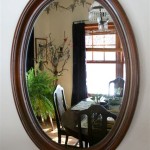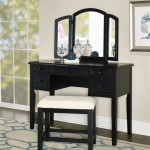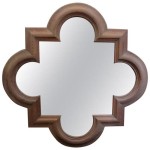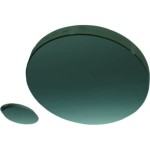Fog-Free Mirrors: A Clear View
Fogged mirrors are a common nuisance, particularly in bathrooms after a hot shower. The fog forms due to condensation, the process where water vapor transitions into a liquid state. Warm, moist air from the shower comes into contact with the cooler mirror surface, causing the water vapor in the air to condense into tiny water droplets on the mirror, obscuring the reflection.
Several methods exist to prevent or eliminate this fogging, ranging from simple, temporary solutions to more permanent, integrated approaches. Understanding the underlying principles behind each method allows for informed decisions based on individual needs and preferences.
One common temporary solution is wiping the mirror with a towel. This physically removes the condensed water droplets, providing a clear surface. However, this method is only temporary, as the mirror will fog up again unless the temperature and humidity conditions change. It also requires repetitive action, which can be inconvenient.
Another temporary fix involves applying shaving cream, toothpaste, or a similar substance to the mirror and then wiping it clean. These substances leave a thin film that temporarily reduces the surface tension of the mirror, making it more difficult for water droplets to form. While relatively effective, this approach requires regular reapplication and can leave residue on the mirror.
More permanent solutions generally involve altering the temperature of the mirror surface to prevent condensation. Heated mirrors, for example, function by warming the mirror surface to a temperature above the dew point of the surrounding air. This prevents the water vapor from condensing on the mirror. These mirrors are often integrated into bathroom vanities and can be wired to activate with a light switch or a separate switch.
Anti-fog films offer another permanent solution. These thin, transparent films adhere to the mirror surface and contain a hydrophilic coating that attracts water molecules. Instead of forming tiny droplets, the condensed water spreads evenly across the film, creating a transparent sheet of water that doesn't obstruct the reflection. These films are generally easy to install and offer a cost-effective solution.
Certain ventilation strategies can also help reduce mirror fogging. Running an exhaust fan during and after a shower helps remove the warm, moist air from the bathroom, lowering the humidity and reducing the likelihood of condensation. Opening a window can also achieve a similar effect, although this may not be practical in all climates or bathroom configurations.
The choice of mirror material can also influence fogging. While most bathroom mirrors are made of standard glass, some alternatives exist. For instance, acrylic mirrors are less prone to fogging due to their slightly warmer surface temperature compared to glass. However, acrylic mirrors are generally more susceptible to scratching.
Some advanced mirrors incorporate anti-fog technology directly into the glass itself. These mirrors typically feature a thin, transparent heating element embedded within the glass layers. The heating element warms the mirror surface, preventing condensation. These integrated solutions offer a seamless and aesthetically pleasing option, though they typically come at a higher price point.
When selecting a fog-free mirror solution, several factors should be considered. Budget, installation complexity, and aesthetic preferences play a significant role. Temporary solutions, such as wiping or applying substances, offer immediate and low-cost remedies but require regular maintenance. More permanent solutions, such as heated mirrors or anti-fog films, require an initial investment but offer long-term convenience.
The size and location of the mirror are also important considerations. For smaller mirrors, simple solutions like wiping or applying a film may suffice. For larger mirrors or those in frequently used bathrooms, a more permanent solution like a heated mirror might be preferable. The bathroom's existing electrical wiring and ventilation system can also influence the feasibility of certain solutions.
Maintaining fog-free mirrors, regardless of the chosen method, often involves regular cleaning to remove any residue or buildup. This ensures optimal performance and longevity of the chosen solution. Following manufacturer instructions for specific products, such as anti-fog films or heated mirrors, is crucial for proper installation and maintenance.
Ultimately, the ideal fog-free mirror solution depends on individual needs and circumstances. By understanding the underlying principles of condensation and the various methods to prevent it, individuals can make informed decisions to achieve a consistently clear reflection.

Acclaim Fog Free Mirror Electric Lighting Company

Aqua Fog Free Mirror Electric Lighting Company

Aqua Fog Free Mirror Electric Lighting Company

Acclaim Fog Free Mirror Electric Lighting Company

Electric Mirror Isf 1111 Acclaim Lighted In Shower Bliss Bath Kitchen

Aqua Fog Free Mirror Electric Lighting Company

Dentista Occlusal Mirror Fog Free Led Intraoral Photo System 3pcs Mirrors Kit

Conairman Fog Free Men S Mirror

Fog Free Mirror Set Main Orthodontics

Wellfor 60 In X 36 Bathroom Mirror Dimmable Lighted Silver Fog Free Frameless Vanity The Mirrors Department At Com








